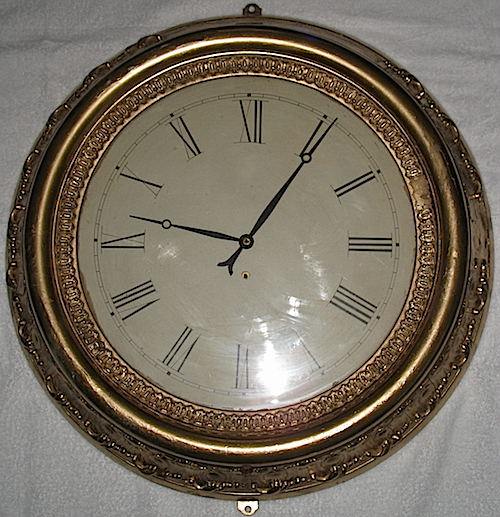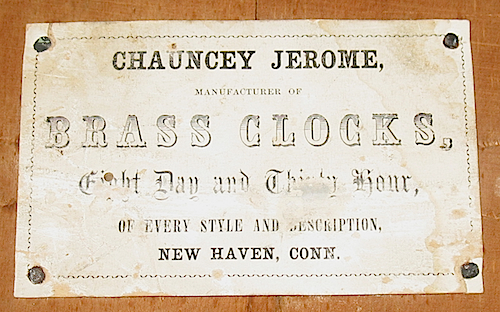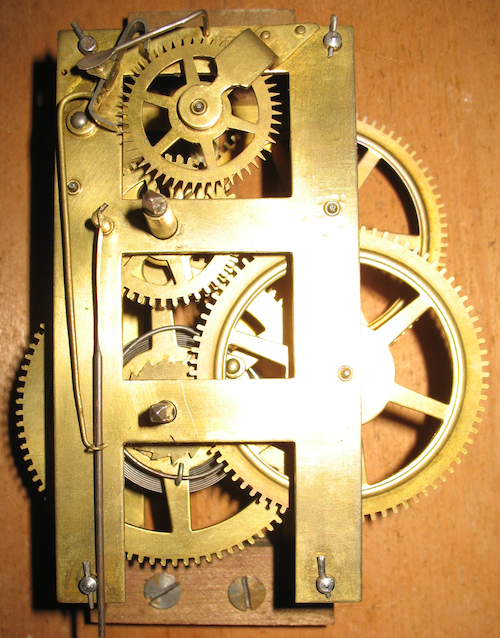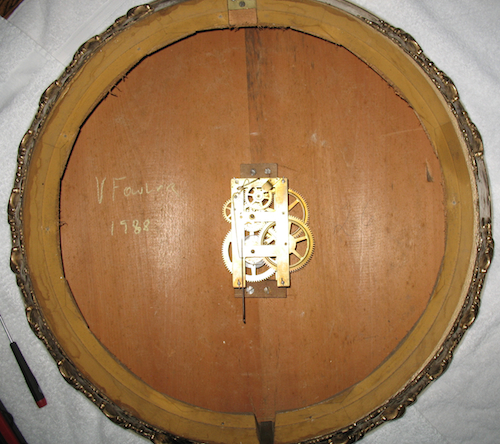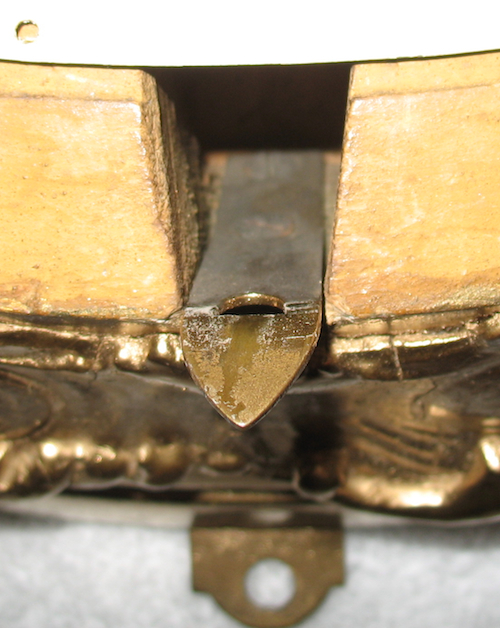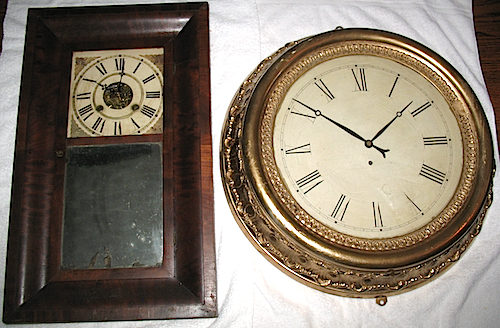This gilt gallery timepiece measures in at a whopping 24 inches in diameter. The 1852 and 1853 Jerome trade catalogs display a number of gilt gallery timepieces, the largest being 22 inches. Despite the fact that the 24-inch model is not listed in the catalogs, it probably dates to around 1852-1853. A timepiece like this would have been mounted in a prominent place in a bank, library, office, or other commercial establishment.
Card label on back of case advertising clocks “OF EVERY STYLE AND DESCRIPTION.”
The 8-day time only movement does not have a maker’s stamp, but it is clearly a Jerome product.
The movement is only accessible with the dial removed. Complicating matters is the fact that there is no door to reach the pendulum to start it or to regulate it. However, there is a grooved inset for the bezel latch (at bottom; close-up view below). This allows enough access to get the pendulum swinging. Regulating the clock is another matter. I believe these may have been hung in a temporary location with the dial off. Over the course of a few weeks it should have been possible to regulate the clock, at which point it could be reassembled and mounted in its permanent location.
Close-up showing the recessed area that the latch is set into. The recess permits limited access to the inside of the clock; just enough to nudge the pendulum into motion.
To better appreciate the size of the clock, I set it next to a 30-hr ogee.
Page from the 1853 Jerome trade catalog (Kenneth D. Roberts, 1971) showing the 8-day Gilt Gallery Time Piece. The catalog line drawings for gilt timepieces do not attempt to reproduce the gesso ornamentation on the case.
